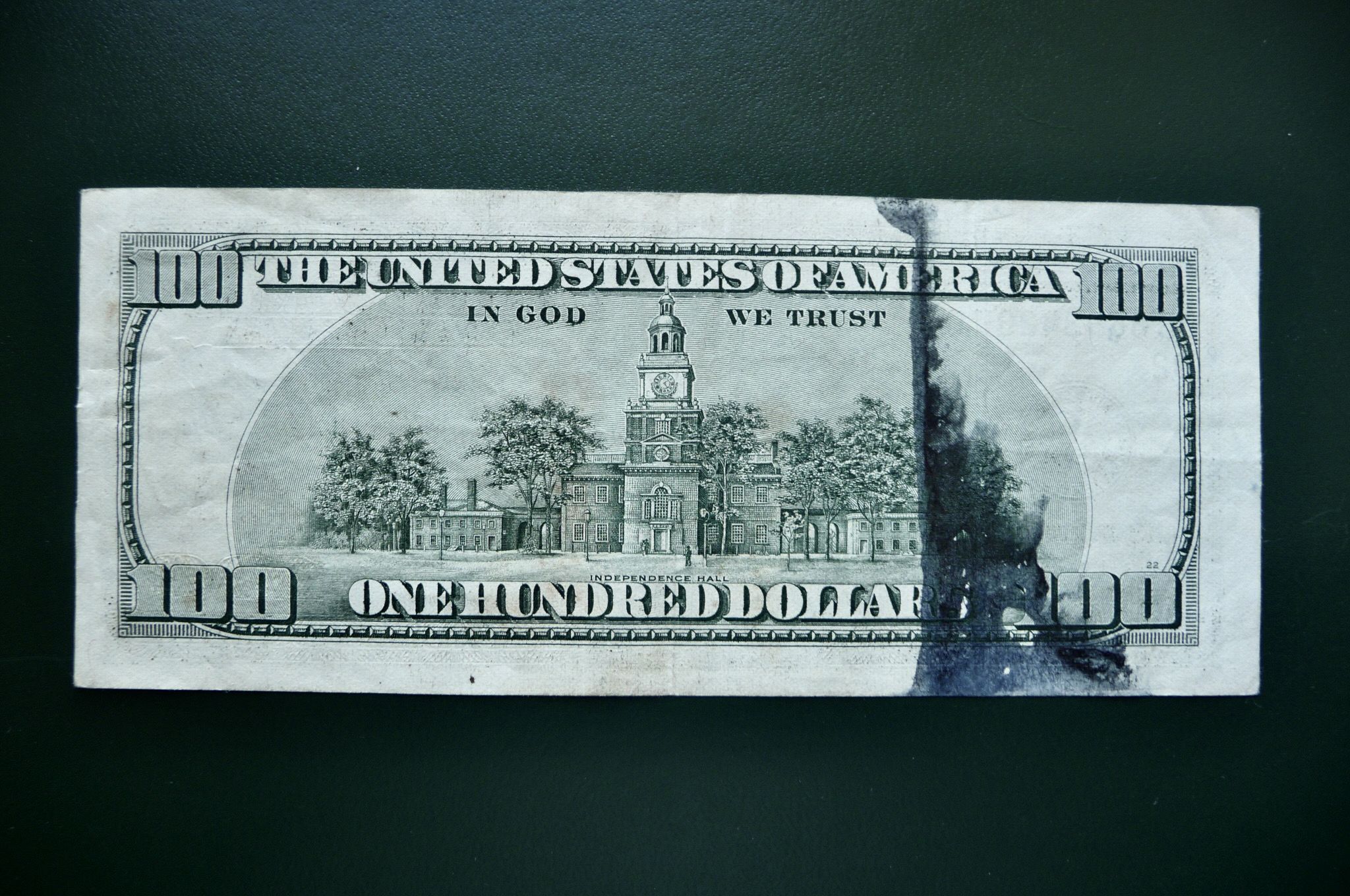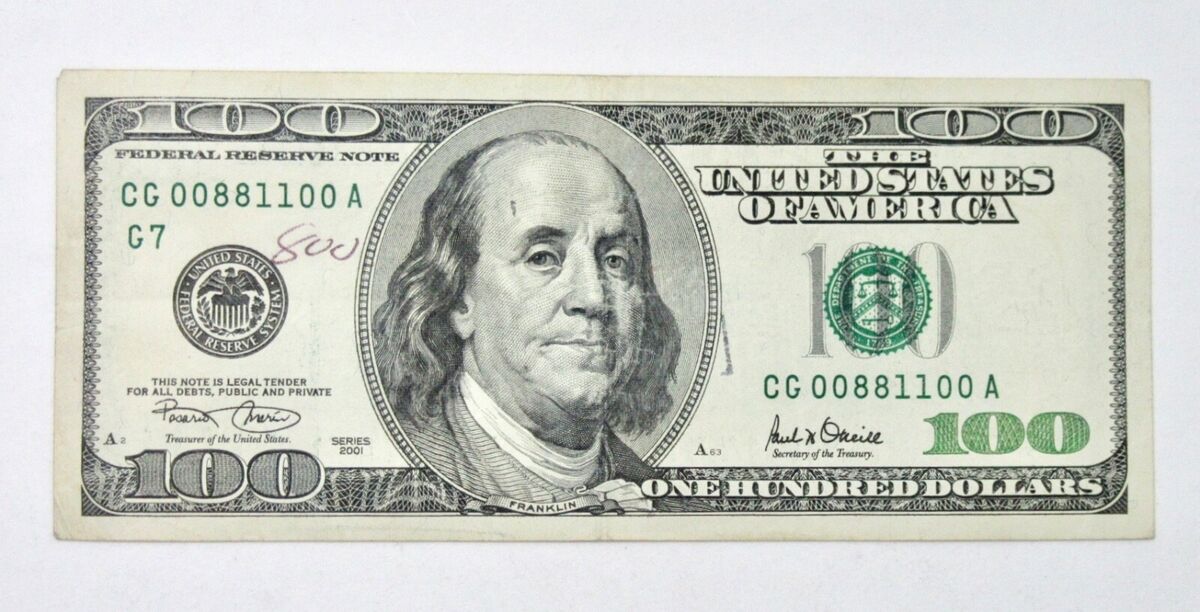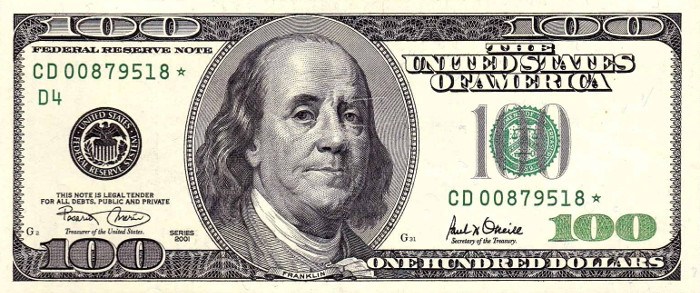The 2001 one hundred dollar bill is part of the Federal Reserve Note series that features various distinct design elements and enhanced security features compared to earlier series. For collectors, knowing the 2001 100 dollar bill value is essential, as the value of these bills can fluctuate depending on factors like condition, rarity, and whether the bill has any unique characteristics, such as errors or star notes.
In this article, we will delve into the specifics of the 2001 one hundred dollar bill and explore its value in different conditions. We will also discuss the factors that influence its worth, including star notes, fancy serial numbers, and rare printing errors.

Are a seasoned collector or a curious observer, understanding the 2001 100 dollar bill value can help you better assess your collection or make informed decisions when buying or selling currency.
Features Of The 2001 $100 Bill
The 2001 $100 bill is immediately recognizable due to its design and security features. These include:
- Large Portrait of Benjamin Franklin: The 2001 one hundred dollar bill prominently displays Benjamin Franklin’s portrait, a feature that remains consistent in the design of $100 bills issued by the United States.
- Color-shifting Ink: When tilted, the ink on the bill changes color from green to black, which is an important anti-counterfeiting feature.
- Watermark: A watermark with Franklin’s image is visible from both sides of the bill, adding an extra layer of security.
- Security Thread: A security thread embedded in the paper glows pink when exposed to ultraviolet light.
- Microprinting: Small printed text is visible under magnification and is part of the bill’s enhanced security features.
- Large Numeral ‘100’: A large, bold “100” is featured in the lower right corner of the bill for easy identification.
These features make the 2001 series $100 bill more difficult to counterfeit than previous editions. However, despite these modern features, most 2001 100 dollar bills are still only worth their face value unless they are in pristine condition or possess unique attributes.
Condition and Its Impact on Value
When determining the 2001 100 dollar bill value, one of the most important factors to consider is the bill’s condition. In general, 100 dollar bills from the 2001 series are worth their face value of $100 in circulated condition.

However, if you happen to have an uncirculated bill, its value could be significantly higher.
- Uncirculated Condition: A 2001 $100 bill in uncirculated condition, particularly one graded MS 63, can sell for around $125. This is a modest premium over its face value, but it can increase with additional desirable features like rare serial numbers or a pristine grading.
- Star Notes: One of the more valuable types of 100 dollar bills from the 2001 series are star notes. These bills are replacements for notes that were misprinted during the production process. Star notes are rarer than regular bills, and their value can range from $125 to $175 in uncirculated condition (MS 63 grade).
Star notes from Federal Reserve Banks in New York are particularly sought after and can command higher prices.
The Role of Fancy Serial Numbers
Another factor that can influence the 2001 100 dollar bill value is the serial number. Fancy serial numbers are considered highly collectible and can significantly increase the value of the bill. Fancy serial numbers might include:
- Repeating Numbers: For example, 11111111 or 77777777.
- Low Serial Numbers: Bills with serial numbers that start with 00000001 are often highly prized.
- Solid Serial Numbers: These feature the same number repeated, such as 33333333.
The value of a $100 bill with a fancy serial number can vary greatly, from $149.50 to as much as $9,200. The more unique or aesthetically appealing the serial number, the higher the potential worth.
Error Notes and Their Rarity
In addition to the standard 2001 $100 bills, there are also some rare and highly collectible error notes. These mistakes made during the production process can sometimes make the bill more valuable than its standard counterpart.
Some of the most notable errors found in the 2001 series 100 dollar bills include:
- Misaligned Serial Numbers: If the serial numbers on a bill are not properly aligned, it could be considered an error and may increase its value to collectors.
- Ink Smears: Occasionally, a bill may feature ink smears or transitions that are out of the ordinary.
- Paper Fold Errors: Sometimes, the paper used in printing the bills may get folded, leading to errors that make the note more rare and valuable.
- Missing Security Thread: A 100 dollar bill that is missing its security thread can be worth thousands of dollars, especially if it is in good condition. One of the most valuable error notes from the 2001 series was a missing security thread variant that sold for over $5,000.
While such errors are rare, they can significantly increase the value of the bill, especially among collectors who specialize in rare and unusual currency.
How To Authenticate Your 2001 $100 Bill
If you are unsure whether your 2001 $100 bill is authentic, there are several easy methods to verify its legitimacy. The U.S. government has incorporated a variety of security features into its currency, and you can use the following methods to check:
- Feel the Bill’s Texture: Genuine 100 dollar bills have raised printing that you can feel. Run your fingers across the bill to check.
- Tilt the Bill: Look for the color-shifting ink on Franklin’s portrait. It should change from green to black as you tilt the bill.
Examine the Security Thread: Hold the bill up to the light to see the embedded security thread. - Look for the Watermark: Franklin’s image should be visible when the bill is held up to the light.
- Check for Microprinting: Use a magnifying glass to check for tiny, hard-to-see text that is embedded in the bill’s design.
By following these steps, you can easily determine if your bill is real. However, if you’re still unsure, it is a good idea to take your 2001 $100 bill to a bank or a currency expert for further verification.
Conclusion
When it comes to the 2001 100 dollar bill value, it’s important to understand that most bills from this series are only worth their face value unless they are in uncirculated condition or have unique attributes. Star notes, fancy serial numbers, and rare printing errors can all increase the value of a 100 dollar bill significantly.
While most 2001 one hundred dollar bills are worth approximately $125 in uncirculated condition, some notes with special features can command much higher prices. For collectors, the most sought-after $100 bills include star notes, bills with fancy serial numbers, and those with printing errors, like missing security threads.
The value of your 2001 100 dollar bill depends on factors such as condition, rarity, and whether it has any special features. By understanding these factors and taking steps to authenticate your bill, you can make informed decisions when buying, selling, or collecting $100 bills. If you’re lucky enough to own a rare or unique 100 dollar bill, it could be worth far more than you might expect!

